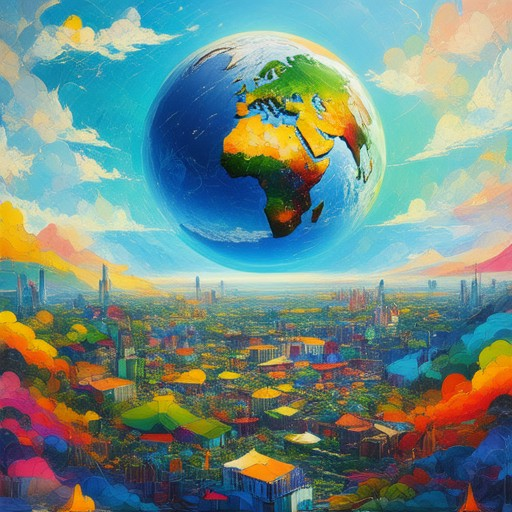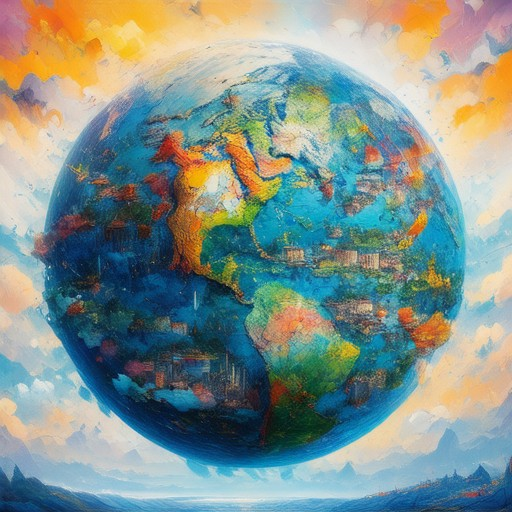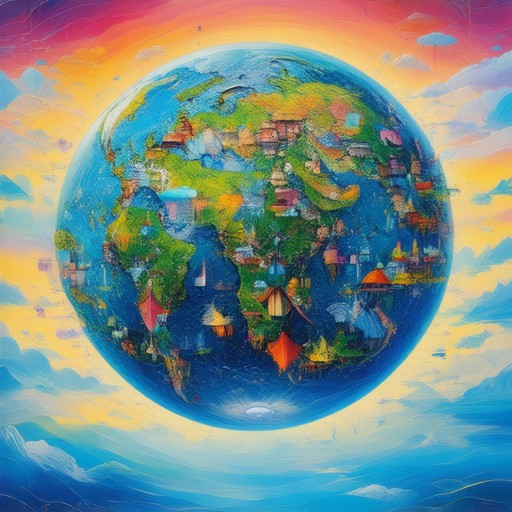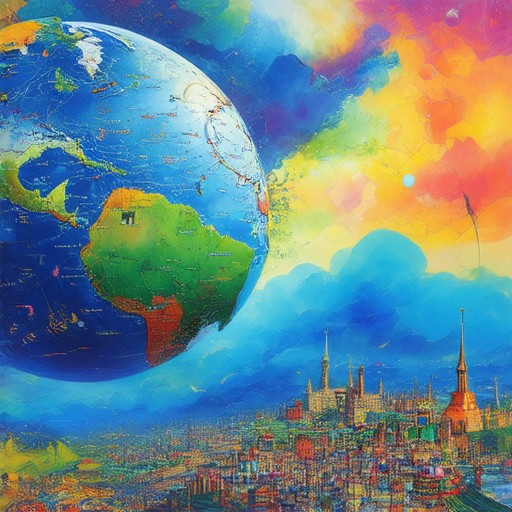Exploring the rich tapestry of global traditions offers a fascinating window into the diverse cultures that shape our world. From ancient rituals to modern celebrations, these customs reflect the unique ways people connect with their heritage and each other. Whether you’re curious about cultural differences, seeking inspiration for travel, or looking to understand societal evolution, delving into global traditions provides invaluable insights. This article takes you on a journey through time and space, uncovering the stories behind iconic traditions and their enduring impact on contemporary life. By examining the methods of exploration, the most popular traditions across nations, and the distinct practices that define various cultural groups, this piece aims to shed light on the intricate dance of human customs. Prepare to discover the hidden gems of cultural traditions, their significance, and how they continue to influence societies worldwide.

Exploring Different Cultures: A Comprehensive Guide
Exploring different cultures is a rewarding journey that broadens your perspective and fosters mutual understanding. Here are effective ways to immerse yourself in global traditions, customs, and lifestyles:
- Engage with Multicultural Media: Watch films, read books, or listen to music from various countries. Platforms like Bending Borders offer rich resources that highlight diverse viewpoints.
- Attend Cultural Festivals: Participate in events celebrating different cultures, such as food festivals or heritage days. These gatherings provide authentic experiences and opportunities to connect with people from diverse backgrounds.
- Learn a New Language: Mastering a foreign language opens doors to understanding cultural nuances. Consider taking classes or using apps like Duolingo to get started.
- Travel Internationally: Experience firsthand the traditions, architecture, and cuisines of different regions. While planning your trip, visit Bending Borders’ Travel Guides for insider tips.
- Connect with Global Networks: Join online communities or forums dedicated to cultural exchange. Websites like Cultural Exchange facilitate meaningful connections with individuals from around the world.
- Pursue Cultural Studies: Enroll in courses or workshops focused on cultural studies. Institutions often offer programs that delve into the history, art, and social norms of various cultures.
- Practice Empathy and Open-Mindedness: Approach cultural exploration with curiosity and respect. Be open to learning and understanding differing perspectives, which strengthens cross-cultural relationships.
To deepen your immersion, consider these additional strategies:
- Volunteer Abroad: Work with local communities in another country to gain hands-on experience of their customs and daily life.
- Participate in Cultural Exchanges: Swap stories, traditions, and skills with people from different cultures through organized exchange programs.
- Explore Art and History: Visit museums, historical sites, and art exhibitions that showcase the contributions of various cultures to global heritage.
Beyond passive engagement, take proactive steps to share and spread cultural knowledge. Host cultural potlucks, share traditional recipes, or organize workshops to teach others about your cultural background. By actively participating in cultural exploration, you contribute to a more connected and inclusive world.
Most Popular Traditions Around the World
Below is a list of some of the most celebrated and widely recognized traditions from around the globe:
-
Carnival in Brazil
The vibrant Carnival celebration in Brazil is one of the largest and most famous festivals, featuring elaborate parades, colorful costumes, and lively music.
-
Mardi Gras in New Orleans
Known for its unique blend of history, culture, and entertainment, Mardi Gras is a massive event held in New Orleans, Louisiana, USA.
-
Chinese New Year
Marking the Lunar New Year, Chinese New Year is celebrated with fireworks, lanterns, and traditional foods across China and other regions with significant Chinese populations.
-
Diwali in India
One of the most significant Hindu festivals, Diwali celebrates the victory of light over darkness and is marked by illuminated lamps, fireworks, and family gatherings.
-
Halloween in North America
A popular celebration in many parts of North America, Halloween involves costumes, trick-or-treating, and decorative displays of pumpkins and ghosts.
-
Christmas Across Europe
Christmas is a major holiday in many European countries, with traditions such as Christmas markets, Santa Claus parades, and festive decorations.
-
Ramadan in the Middle East
During Ramadan, Muslims fast during the day and break their fast at sunset with a meal called Iftar. This is a time of reflection, community, and family gatherings.
-
La Tomatina in Spain
A unique festival in Spain where thousands of tomatoes are thrown in a friendly manner during the La Tomatina festival in Valencia.
-
Neon Lights Festival in Japan
Also known as the “Festival of Lights,” this event features millions of glowing LED lights illuminating cities like Kagoshima and Nagasaki.
-
Swiss Cheese Rolling Festival
In Switzerland, cheese lovers participate in races where wheels of cheese are rolled down steep hills in a fun and quirky tradition.
-
Bullfighting in Spain
A traditional and controversial spectacle in Spain, bullfighting involves bulls and matadors in a series of passes where the bull is ultimately killed.
-
Day of the Dead in Mexico
During Día de los Muertos, Mexicans honor deceased loved ones through elaborate altars, vibrant decorations, and joyful celebrations.

Cultural Differences Around the World
Cultural differences are a fascinating reflection of human diversity, shaping our behaviors, beliefs, and customs in unique ways across the globe. Here are some notable examples:
- Greetings and Communication Styles: While many cultures use direct eye contact and a smile as common greetings, others may opt for more subtle gestures like bowing (Japan) or handshakes with specific rules (e.g., elbow bumps in some regions).
- Food Preferences: Dietary habits vary widely, from vegetarianism prevalent in certain parts of India to meat-heavy cuisines popular in Middle Eastern countries. Religious beliefs often influence these preferences.
- Clothing and Appearance: Traditional attire like the sari in India, the kilt in Scotland, or the hijab in many Muslim communities reflects deep cultural identities. Fashion choices also differ significantly between regions.
- Social Norms and Etiquette: Rules regarding public displays of affection, personal space, and gender roles vary greatly. For instance, some cultures emphasize collective modesty, while others prioritize individual freedom.
- Language and Education: Language education often plays a role in preserving cultural heritage. For example, schools in Hawaii teach Hawaiian language to maintain indigenous traditions.
Cultural differences highlight the importance of empathy and understanding when interacting with people from diverse backgrounds. They also underscore the value of preserving and celebrating the unique traditions that define us as a global community.
For more insights into global cultures, explore Bending Borders , a platform dedicated to bridging cultural divides through storytelling and travel experiences.

What Are 5 Examples of Cultural Groups?
Here are five distinct cultural groups from around the world:
- Amish : Known for their traditional lifestyle, plain clothing, and community-oriented values, the Amish are a prominent cultural group primarily found in North America.
- Maori : Indigenous to New Zealand, the Maori culture is rich in history, art, and traditions, with a significant focus on tribal roots and cultural preservation.
- Hare Krishna : A subgroup of Hinduism, Hare Krishnas are recognized for their devotion, chanting, and distinctive attire, which includes vibrant shirts and beads.
- Inuit : Inuit culture is deeply rooted in Arctic regions, emphasizing subsistence living, oral traditions, and a strong connection to nature.
- Geeks/Nerd Culture : Characterized by a passion for technology, science fiction, and intellectual pursuits, geek culture has become a widespread subculture in many parts of the world.
These examples highlight diverse cultural expressions across various regions and communities.
Learn more about exploring global cultures .
What Are the 4 Main Cultures?
The concept of culture can be broken down into distinct categories to better understand its variations. One widely recognized framework is Hofstede’s Cultural Dimensions Theory, which identifies four primary cultural dimensions. These dimensions help us understand how different societies approach various aspects of life:
- Power Distance : This dimension refers to the extent to which less powerful members of society accept and expect that power is distributed unequally. High power distance cultures emphasize hierarchical structures, while low power distance cultures promote equality and informality.
- Individualism vs. Collectivism : This dimension contrasts societies that prioritize individual achievements and personal goals over group goals. Individualistic cultures encourage personal success and autonomy, whereas collectivist cultures value teamwork and group harmony.
- Uncertainty Avoidance : This dimension focuses on how societies cope with ambiguity and risk. Cultures with high uncertainty avoidance prefer structured environments and minimize risks, while those with low uncertainty avoidance embrace change and adaptability.
- Long-Term vs. Short-Term Orientation : This dimension highlights the preference for immediate rewards versus delayed benefits. Long-term oriented cultures invest in future outcomes and plan meticulously, while short-term oriented cultures focus on quick results and spontaneity.
These four cultural dimensions provide a foundational understanding of how different societies operate and interact globally. By recognizing these differences, individuals and organizations can navigate cross-cultural interactions more effectively.

The Big Five Personality Traits in Cultural Context
The Big Five personality traits are a model used in psychology to describe human personality. These traits provide a framework for understanding how individuals differ in behavior, preferences, and tendencies. While these traits are consistent across cultures, their expression and prevalence can vary significantly depending on cultural values and societal norms.
The five traits are:
- Openness – Refers to curiosity, creativity, and openness to new experiences.
- Conscientiousness – Relates to self-discipline, responsibility, and dependability.
- Extraversion – Involves energy and enthusiasm for social interaction and activities.
- Agreeableness – Reflects warmth, empathy, and cooperative behavior.
- Neuroticism – Pertains to emotional stability and vulnerability to stress.
Culture plays a significant role in shaping how these traits manifest. For example:
- In Collectivist Cultures : Traits like Conscientiousness and Agreeableness may be emphasized due to the importance of group harmony and social cohesion.
- In Individualist Cultures : Traits such as Extraversion and Openness often prevail, as individual achievements and personal freedom are valued.
Understanding these cultural differences is crucial for fostering cross-cultural communication and collaboration. By recognizing how personality traits align with cultural values, we can better navigate interactions and appreciate the diversity of human behavior.
For further reading on cultural implications of personality traits, explore our cultural personality insights .




0 Comments